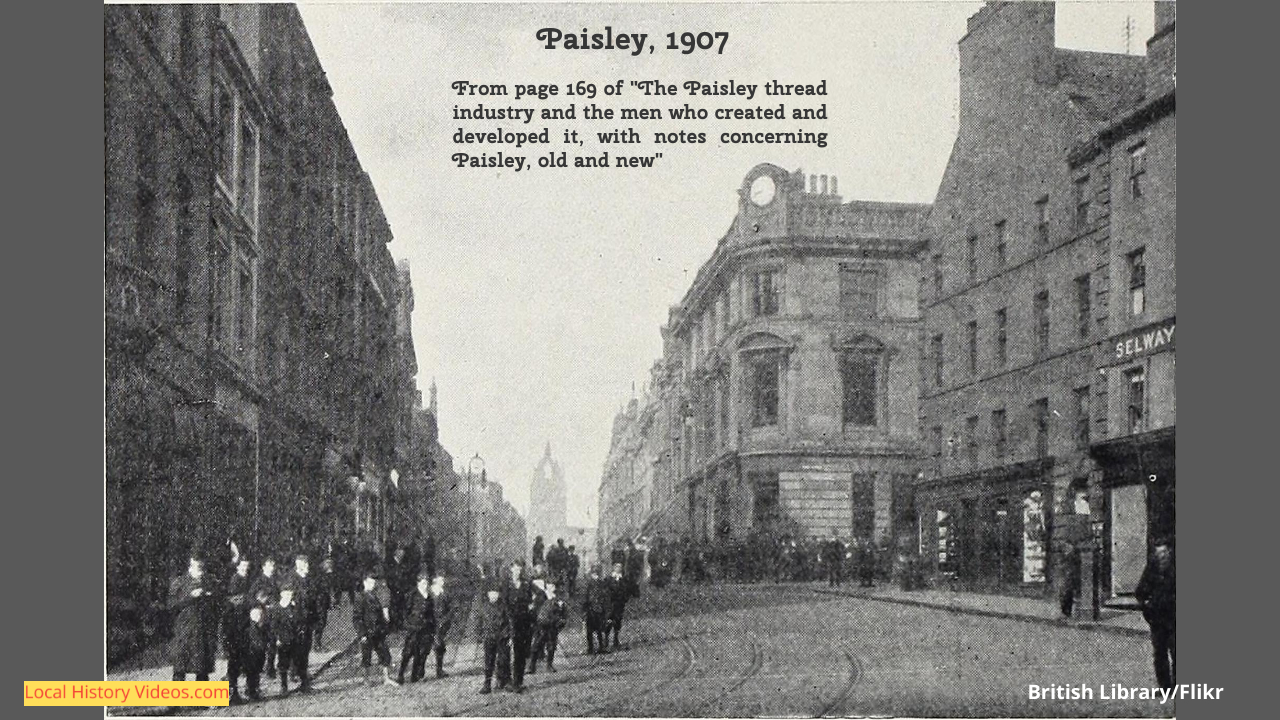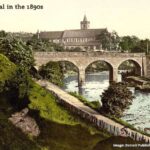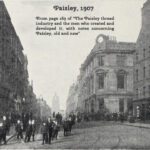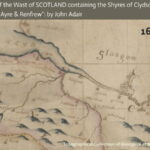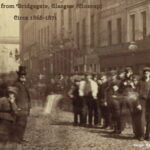Enjoy a glimpse of history through old images of Paisley, in Renfrewshire, Scotland.
Old Pictures of Paisley 1835
The view of the town in 1835 showed quiet countryside to one side of the river, while a spire, mills and smoking chimneys rise across the landscape on the other side.
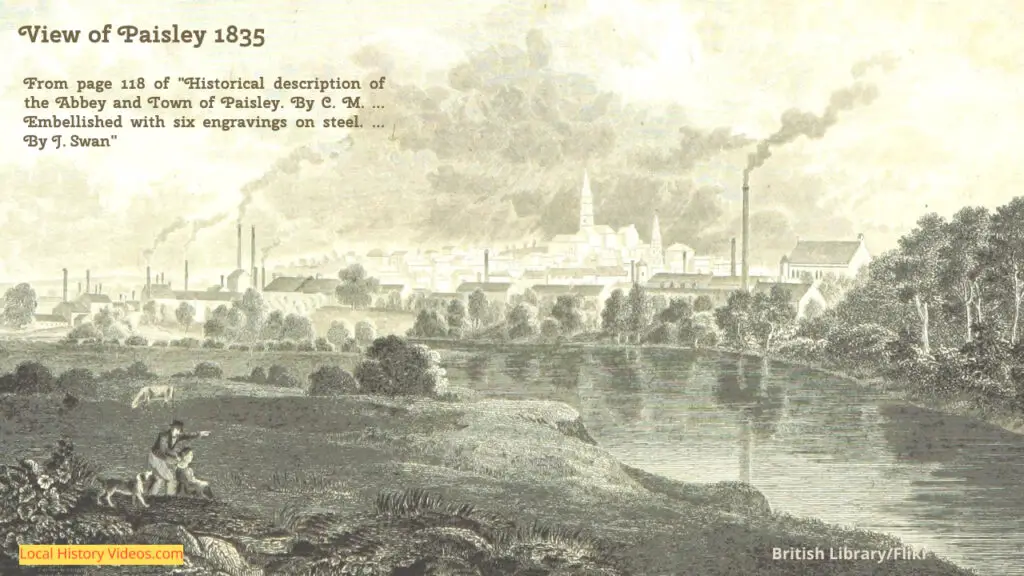
This 1835 scene of Paisley’s High Street shows horses and carriages travelling along the cobbled streets, with elegant buildings rising into the air.
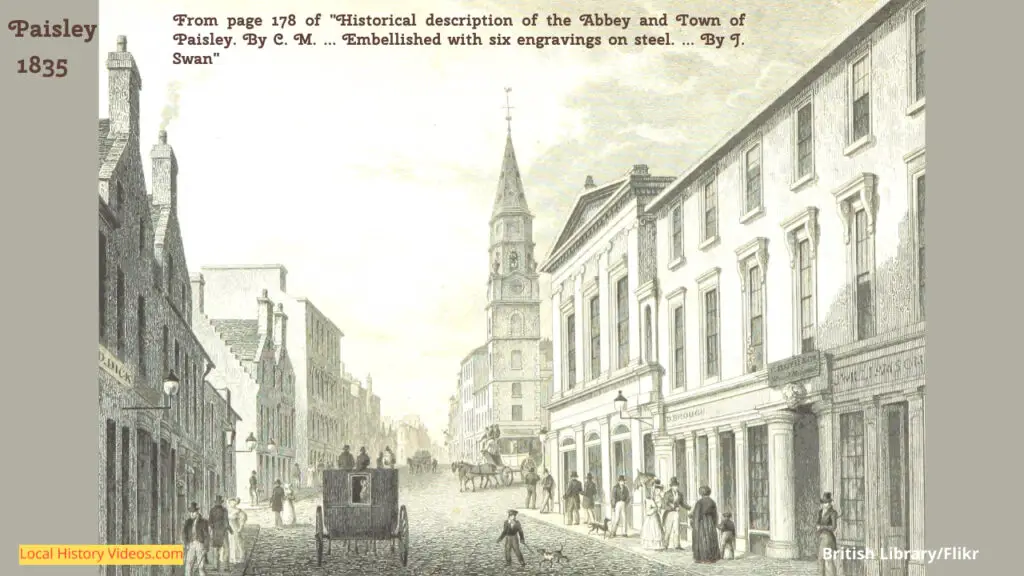
Fountain Gardens
Paisley’s Fountain Gardens is the Renfrewshire town’s oldest public gardens, and contains one of Scotland’s three Category A listed fountains.
In 1797, prominent businessman John Love created the Hope Temple Gardens, which also contained the Hope Temple Museum and a bowling green.
Unfortunately, a disastrous American business venture left John Love bankrupt.
Businessman and philanthropist Thomas Coats bought the gardens in 1866. He brought in James Craig Niven to redesign the park and gardens , with a geometric layout, broader walkways, drinking fountains, rock garden and alpine beds.
26 May 1868 saw the official opening of the Fountain Gardens, which Coats gifted to the people of Paisley.
Love Street, close to the Fountain Gardens, is named after John Love.
Renfrewshire Council now maintains the gardens, and paid for the £650,000 restoration of the central fountain with the help of Historic Scotland, the Heritage Lottery Fund, and other fundraisers and benefactors.
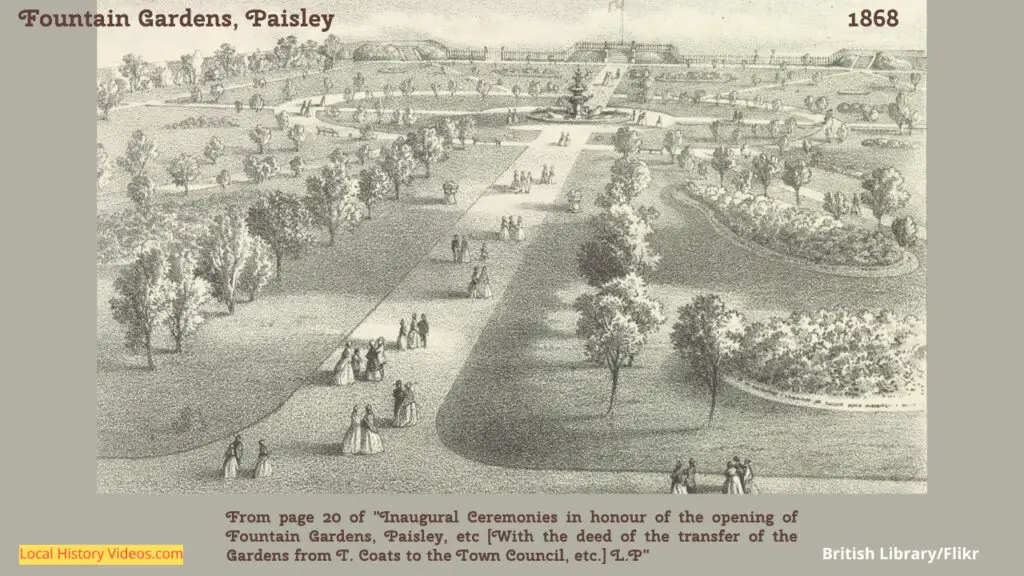
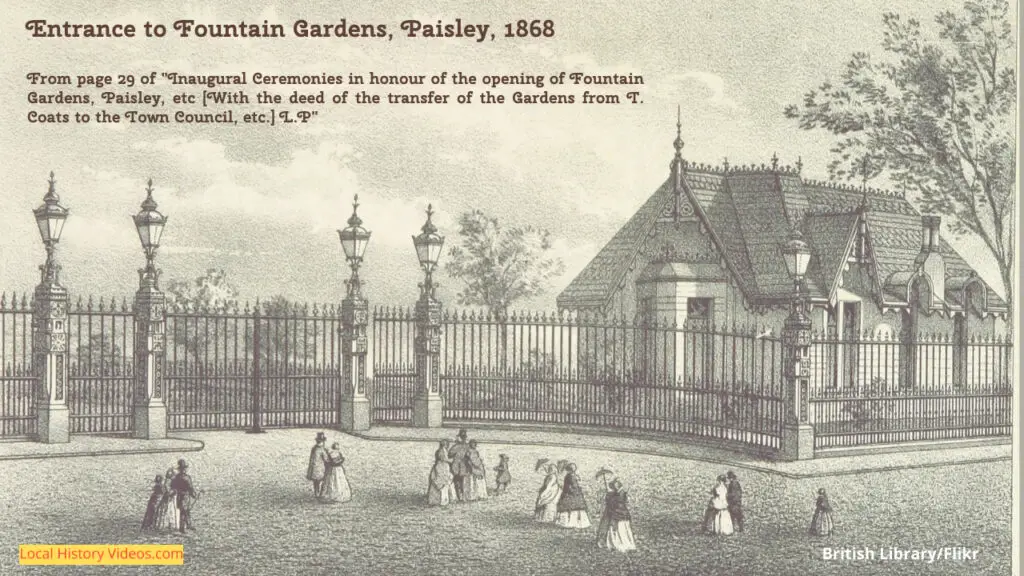
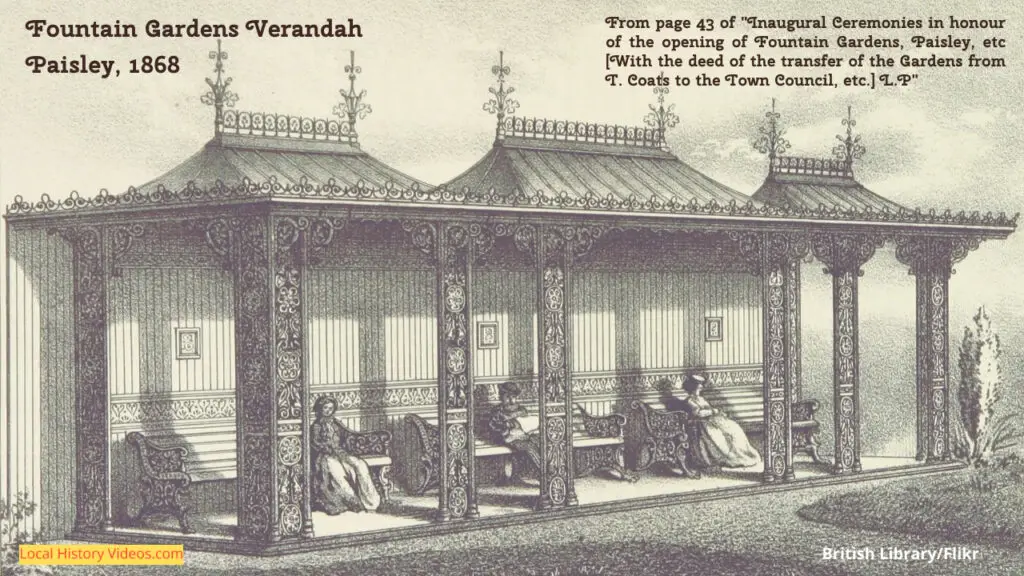
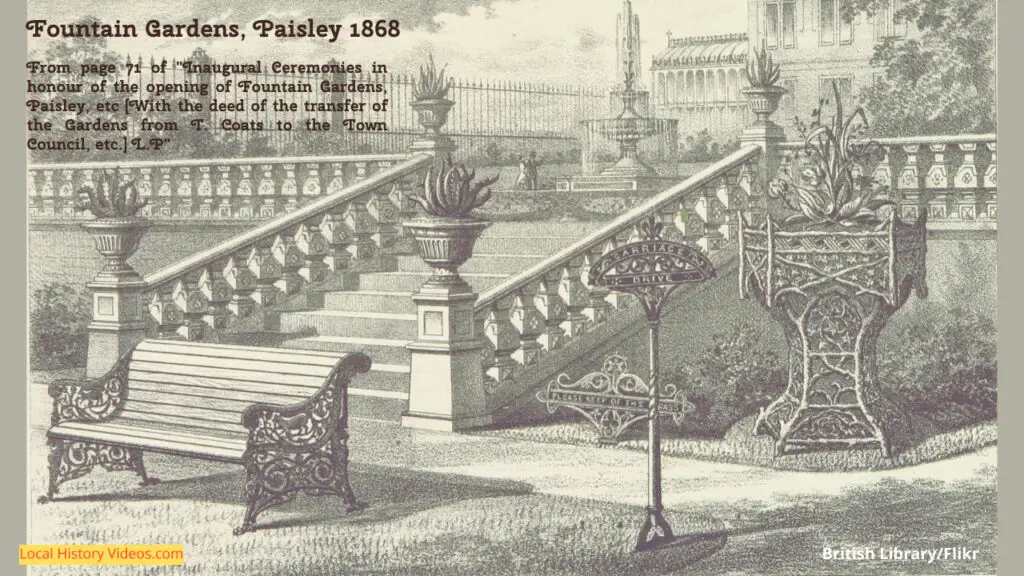
The next image of the Fountain Gardens, which formed part of the Detroit Publishing Company’s collection, is recorded as c,1890-1900. However, other similar images from the town were taken of places which were completed in 1894, so it is unlikely to have been taken before that date.
It’s a lovely image not just for showing the beauty of the Fountain Gardens, but also for capturing the nearby buildings. Just look at the nearby industrial chimneys, some of them billowing thick smoke into the air.
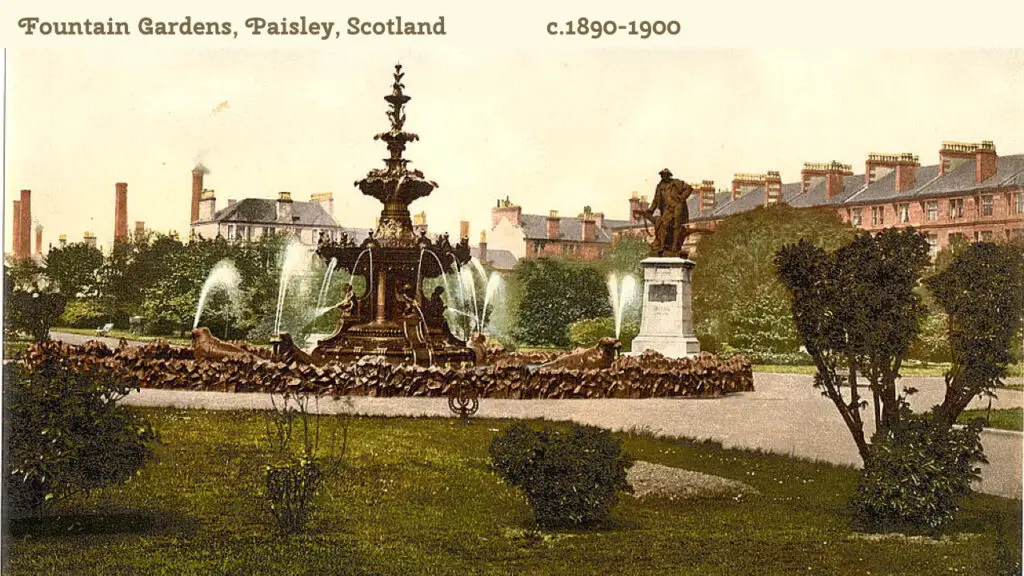
Paisley’s Town Hall
Paisley’s Town Hall, a Category A listed building which still stands in Abbey Close today, was officially opened as the ‘George A. Clark Town Hall” on 30 January 1882.
It was named after George Aitken Clark, a member of the Clark family who owned Anchor Mills. Knowing the civic leaders needed a public space in which to hold concerts and other public events, he left provision in his will for this purpose.
His mother laid the building’s foundation stone, on 22 October 1879.
Just south of the municipal buildings, the site was previously home to a dye works.
The Town Hall cost £50,000 to build, and was designed in the Classical style by William Henry Lynn and William Young.
In summer 2019, a £22 million project started, converting the Town Hall into a performing arts centre.
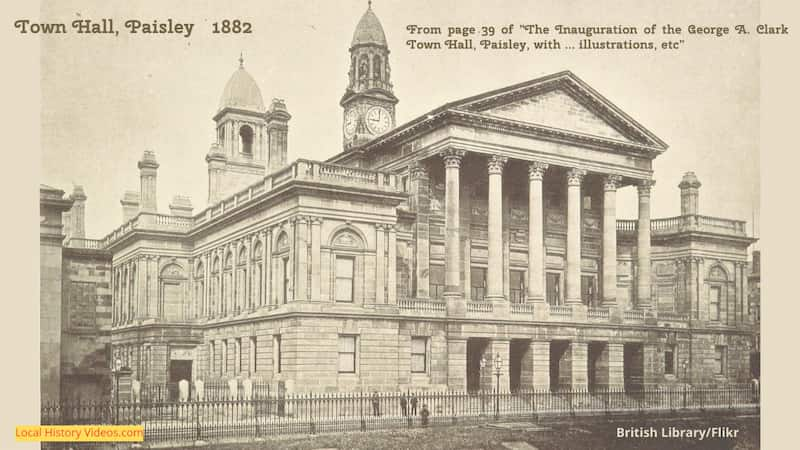
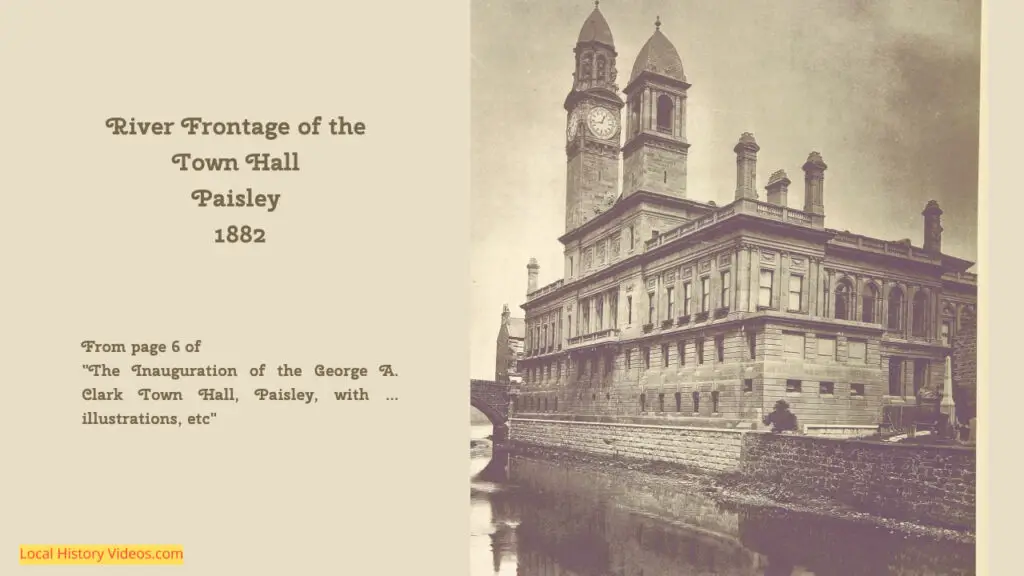
Dunn Square
Water Wynd, now St. Mirren Street, used to have a number of old buildings, which were torn down during Queen Victoria’s reign, creating a controversial open space. Many parties wanted the land sold off to building developers, feeling the area was an eyesore.
In 1894, William Dunn, who became Sir William Dunn, Baronet, following his career as the constituency’s MP, donated the funds to the town to have a pleasant space created.
Constructing Dunn Square according to the design by architect James Donald, who won a competitive design process, cost £9,000 to complete.
Sir Peter Coats and Thomas Coats of the J.&P. Coats Company, are commemorated with statues in a commanding position of everyone who visits the area.
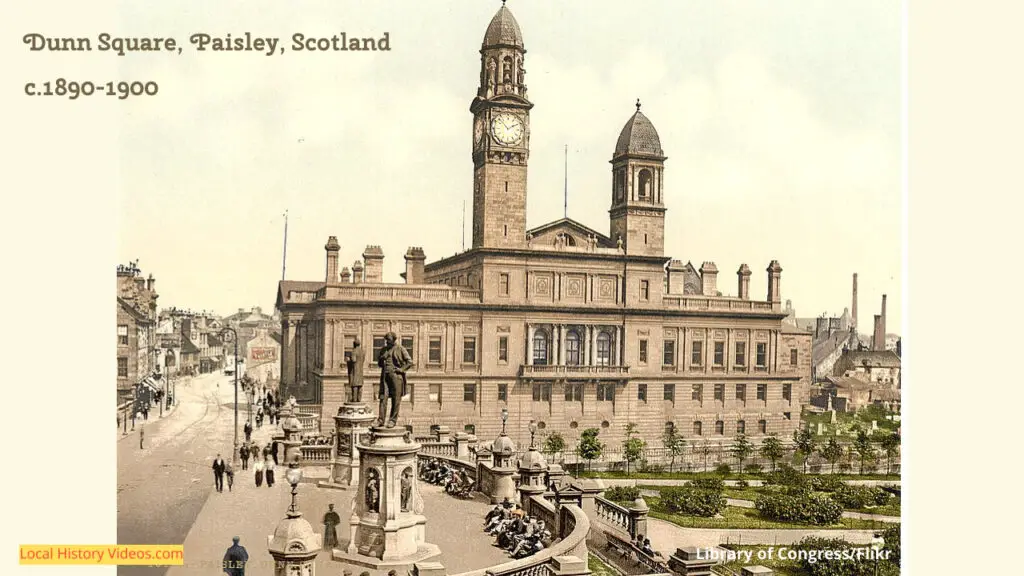
I’ve added a couple of close ups of the Dunn Street image, to see a bit more of the buildings which surrounded Dunn Square at the time.
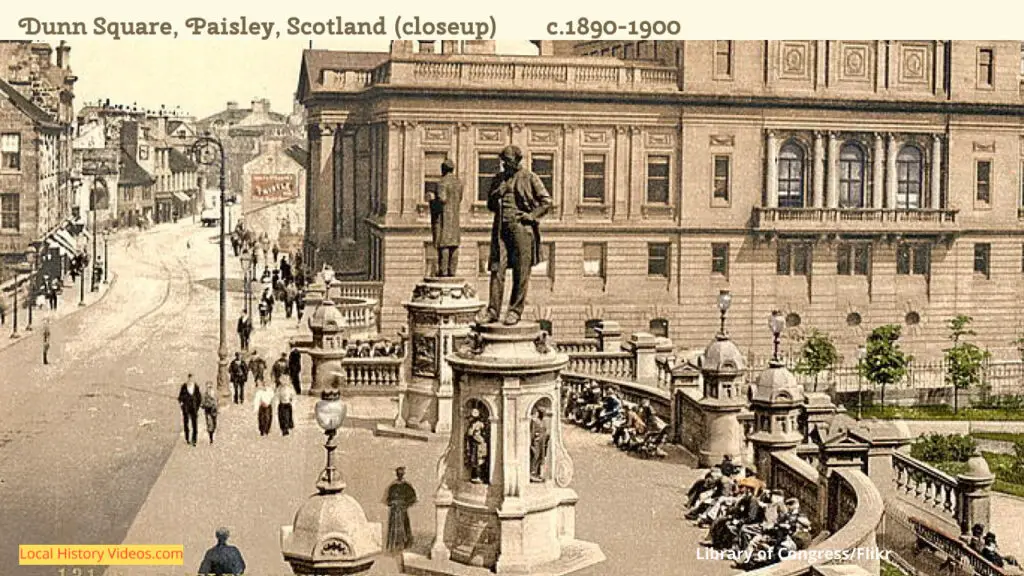
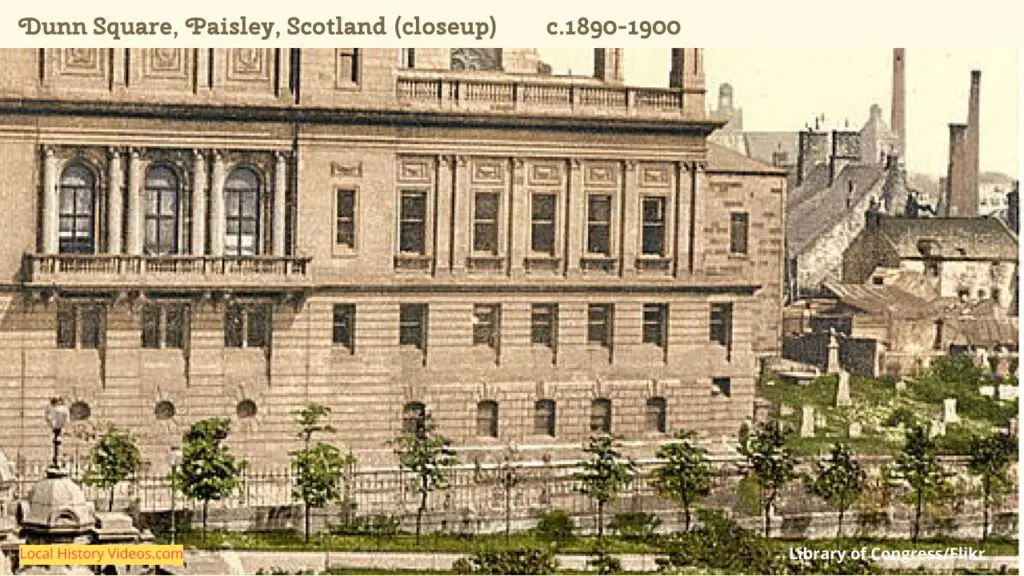
Coats Memorial Church
Standing at the west end of Paisley’s High Street, the Thomas Coats Memorial Baptist Church was completed in May 1894.
The church is named after Thomas Coats (1809-1883), who was a co-founder of the J.&P. Coats Company, and devout member of the Baptist Church.
As a philanthropist, he was involved in the restoration of Paisley Abbey, construction of the Coats Observatory, and founding of the Paisley Fountain Gardens.
After his death, his close family funded the building of the Thomas Coats Memorial Baptist Church, which provided seating for a congregation of up to a thousand people.
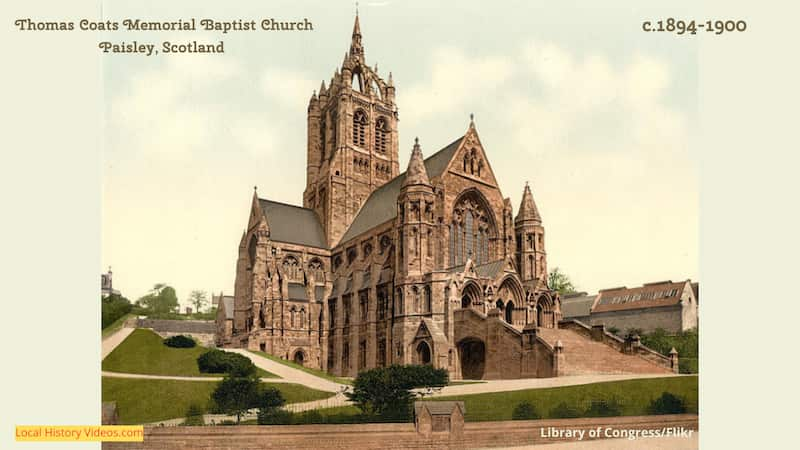
Video of Local Old Photographs
Enjoy a video presentation of fascinating old photos showing the local people and places through the decades.
Old Photographs Paisley Renfrewshire Scotland: Tourscotland (YouTube)
Ferguslie Park
Today, Ferguslie Park sits in Pailsey’s suburbs, and its community is reportedly one of the most deprived in Scotland following closure of the regions’s traditional industries.
But Ferguslie has a long and rich documented history, going back to 1220 when Walter, The Stewart, granted the lands of the Forrest of Paisley to Paisley Abbey.
Following many changes of ownership of the land and Ferguslie Castle or House, by 1872 the estate was owned by wealthy merchant Thomas Coats. Ferguslie Park House was built in 1890 for his son, Sir Thomas Glen-Coats.
In 1926, a large party was held at Ferguslie Park House, in support of Lord Asquith, who stood as the Liberal candidate in a Paisley parliamentary election. Guests included Lord and Lady Asquith, David Lloyd George, his daughter Megan, and Lady Bonham Carter.
The house was demolished in the 1930s after it was given to the town of Paisley by Thomas Coats’ daughters Margaret and Lily Coats.
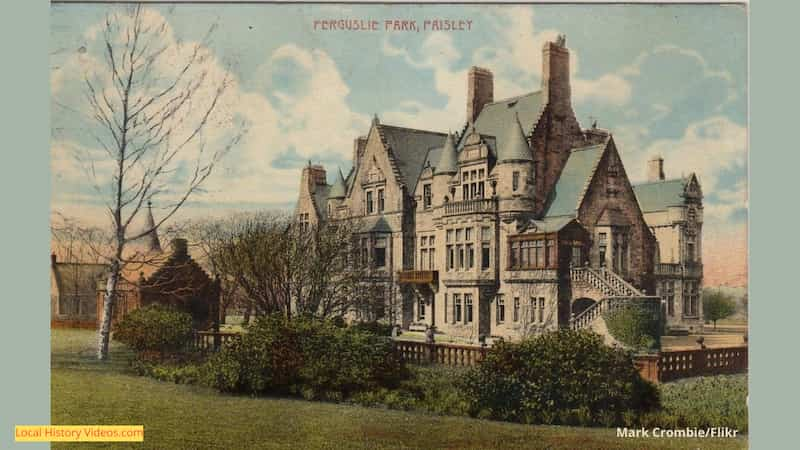
Find out more about Ferguslie in an article written by Stephen Clancy at the Urban Historian.
More about Scotland
- Old Images of Dunblane, ScotlandGlimpse history through old images of Dunblane in Stirling, Scotland.
- Old Images of the Edinburgh FestivalGlimpse the past through these old images of the Edinburgh Festival.
- Old images of Edinburgh, ScotlandStep back in time with fascinating old images of Edinburgh, the capital city of Scotland.
- Old Images of Paisley, ScotlandEnjoy a glimpse of history through old images of Paisley, in Renfrewshire, Scotland. Old Pictures of Paisley 1835 The view of the town in 1835 showed quiet countryside to one side of the river, while a spire, mills and smoking chimneys rise across the landscape on the other side. This 1835 scene of Paisley’s High… Read more: Old Images of Paisley, Scotland
- Old Images of Renfrew, ScotlandGlimpse history through old images of Renfrew, the county town in the west central lowlands of Renfrewshire, Scotland.
- Old Images of the City of Stirling, ScotlandGlimpse history through old images of the city of Stirling, Scotland.
- Newton Mearns, Scotland: Old Photos & FilmsNewton Mearns in East Renfrewshire, Scotland, traces its name back to its ancient roots. Roland De Merns governed this part of Scotland back in the 12th Century, with his seat of power somewhere near Mearns Castle.
- Glasgow, Scotland: Old Photos & FilmEnjoy a glimpse of history through old images of Glasgow, Scotland.
- Helensburgh, Argyll & Bute: Old Photos & FilmStep back in time with fascinating old photos and film of Helensburgh in Argyll & Bute, Scotland.
- The Oldest Trees In The UKThe UK has a surprising number of very ancient yew and oak trees, some of which survive from the Bronze Age. We take a look at the most venerable trees that England, Scotland, Wales and Northern Ireland have to offer.

